Type 8s are assertive, adventurous, and competitive risk-takers.
Reading time: 5 minutes

Gregory Park, Ph.D.
Author
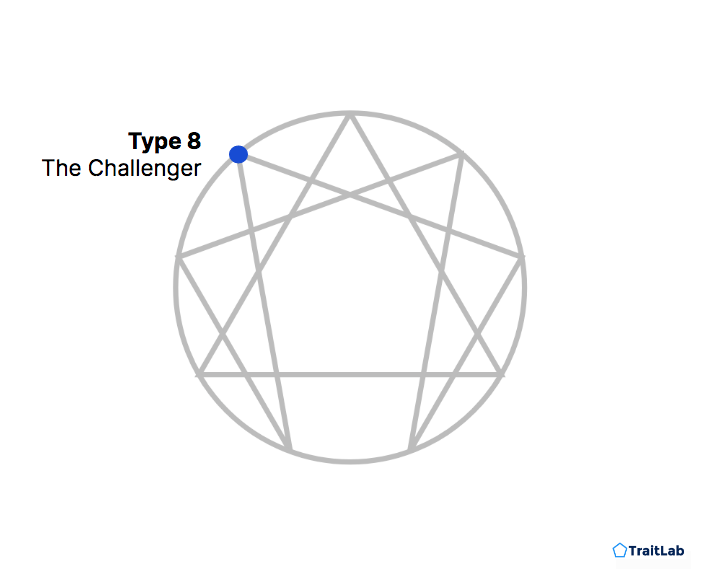
In the Enneagram framework, Type 8s — also known as Challengers or simply Eights — are assertive, adventurous, and competitive risk-takers.
Hook and colleagues (2021) describe Type 8s’ core desire as a need to be in opposition. At their worst, Type 8s’ need for independence and self-sufficiency can undermine their ability to cooperate and develop trusting relationships with others.
This negative side emerges as a symptom of Type 8’s core fear of being harmed, controlled, or violated.

Do you know your closest Enneagram type?
See how your personality compares to all nine types with TraitLab's comprehensive assessment.
Others might describe Type 8s as
The wordcloud below shows the top 100 words used to describe Type 8s. Bigger words describe the more prominent aspects of most Type 8s.
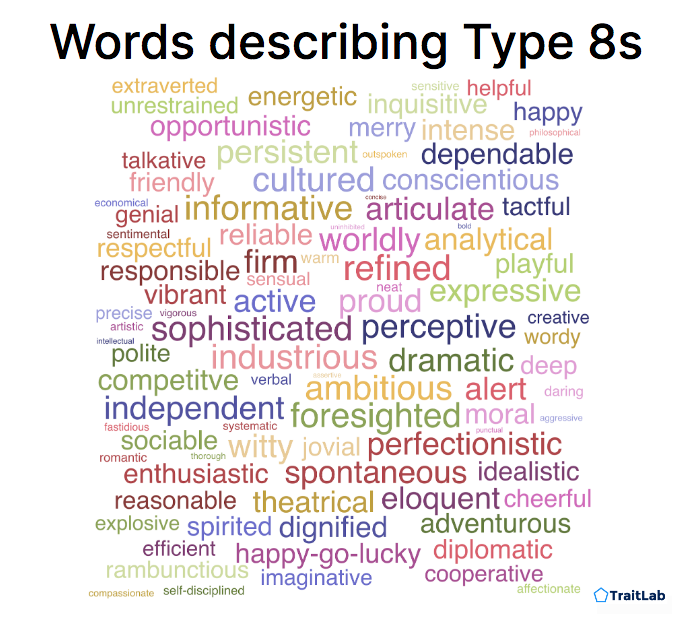
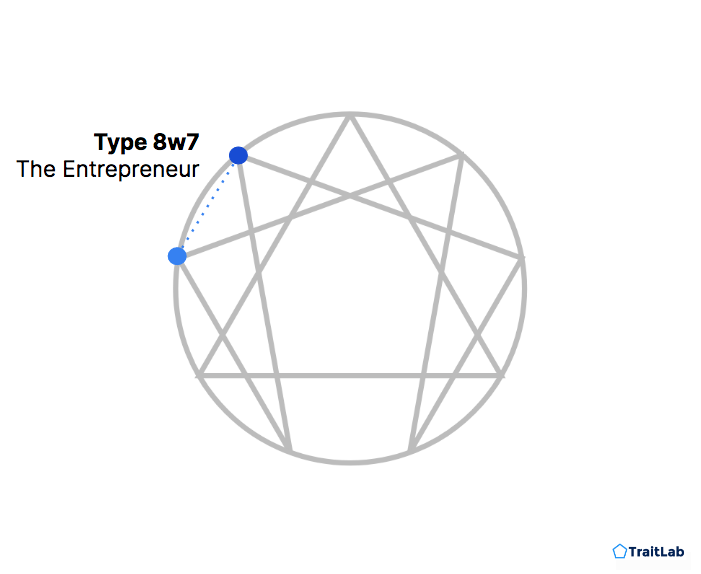
Type 8s with a 7 wing, or 8w7s, take on some characteristics of Type 7: The Enthusiast, including Type 7’s friendlier social enthusiasm and optimism. Type 8w7s are proficient in persuasion and capable of rallying others to join them in their next big adventure.
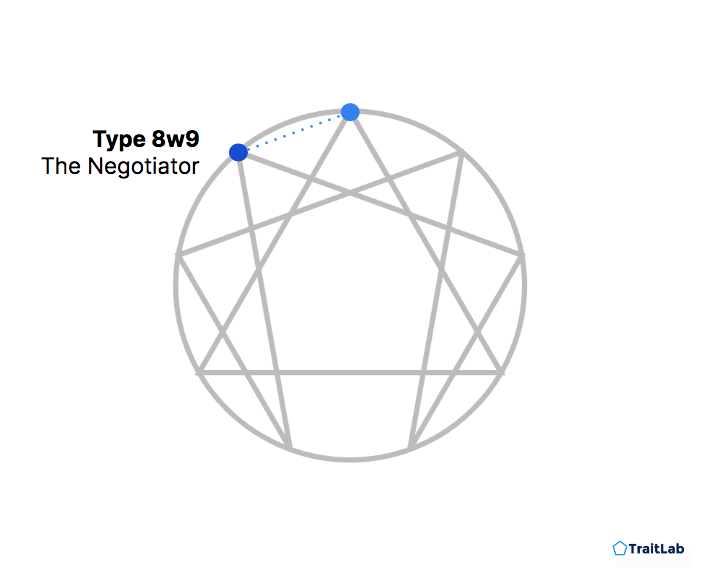
Type 8s with a 9 wing, or 8w9s, exhibit characteristics of Type 9: The Peacemaker. Type 8w9s have the social savvy of their Type 8 counterparts. However, Type 8w9s are more likely to use these skills to build consensus and common ground rather than achieve their own ends. Type 8w9s are natural diplomats and can find agreeable solutions in difficult situations.
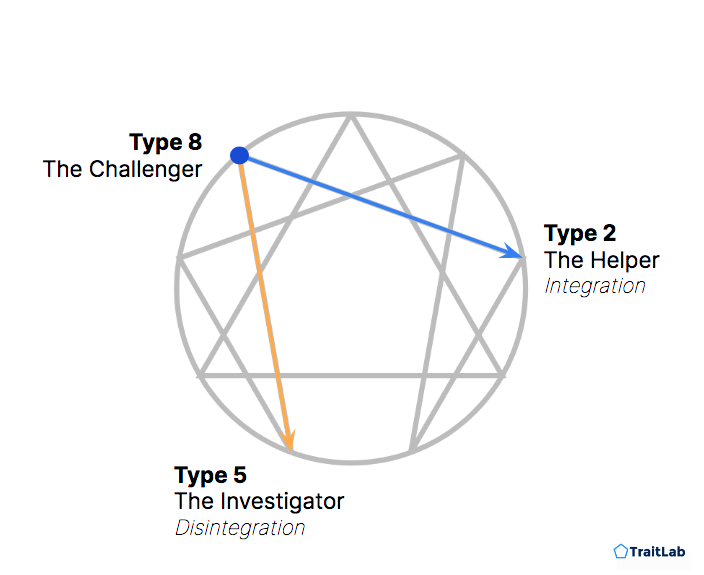
In times of health and security (i.e., integration), Type 8s shift towards Type 2: The Helper. One indication of this shift is greater interpersonal trust and warmth. Healthy 8s let down their defenses and assume positive intent from others.
In times of stress (i.e., disintegration), Type 8s shift towards Type 5: The Investigator. Following this shift, Type 8s retreat to their personal pursuits and push others further away. Disintegrated 8s are more likely to pursue their passions in solitude, gradually alienating themselves.
Based on their distribution of personality traits, TraitLab estimates that roughly 6% of people would be classified as Type 8s.
In studies of personality structure, researchers often use a trait-based approach to describing the differences between people instead of personality types. The most well-established method is the Big Five, which describes differences along five broad dimensions:
Personality types are far less precise than getting exact Big Five measurements, but knowing your personality type can give you a rough idea of where you fall on each dimension.
In the graph below, each dot is a Type 8, placed by where they fall on the Big Five dimensions. You can see that Type 8s can vary quite a bit on any single dimension.
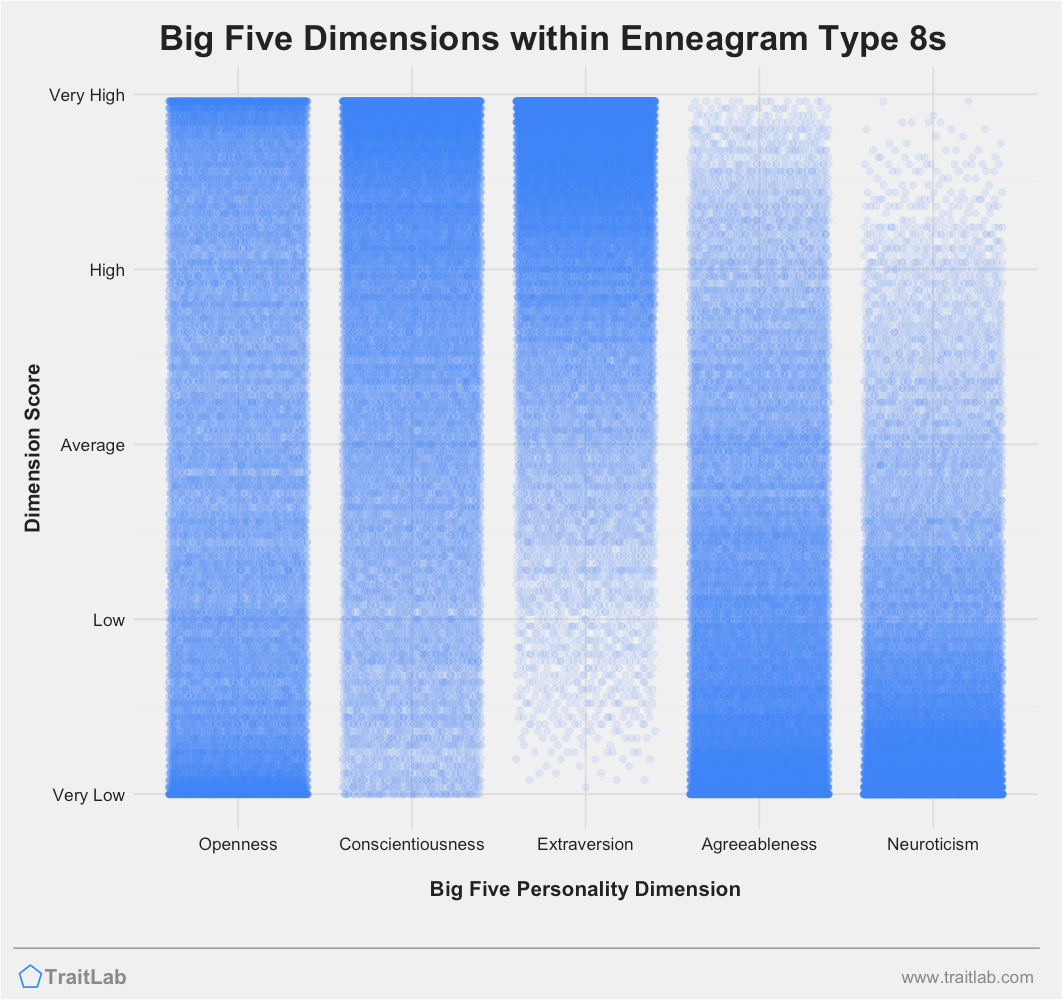
For example, on the Extraversion dimension, Type 8s tend to score much higher than average, so the High and Very High areas are very dark blue. However, there are still a few rare Type 8s in the middle of the Extraversion spectrum.
Below, you can see more detail on how Type 8s score on each Big Five dimension.
Type 8s can vary widely on Openness to Experience. In other words, some Type 8s are less open (more conventional or traditional), others are highly open, and most are somewhere in between.
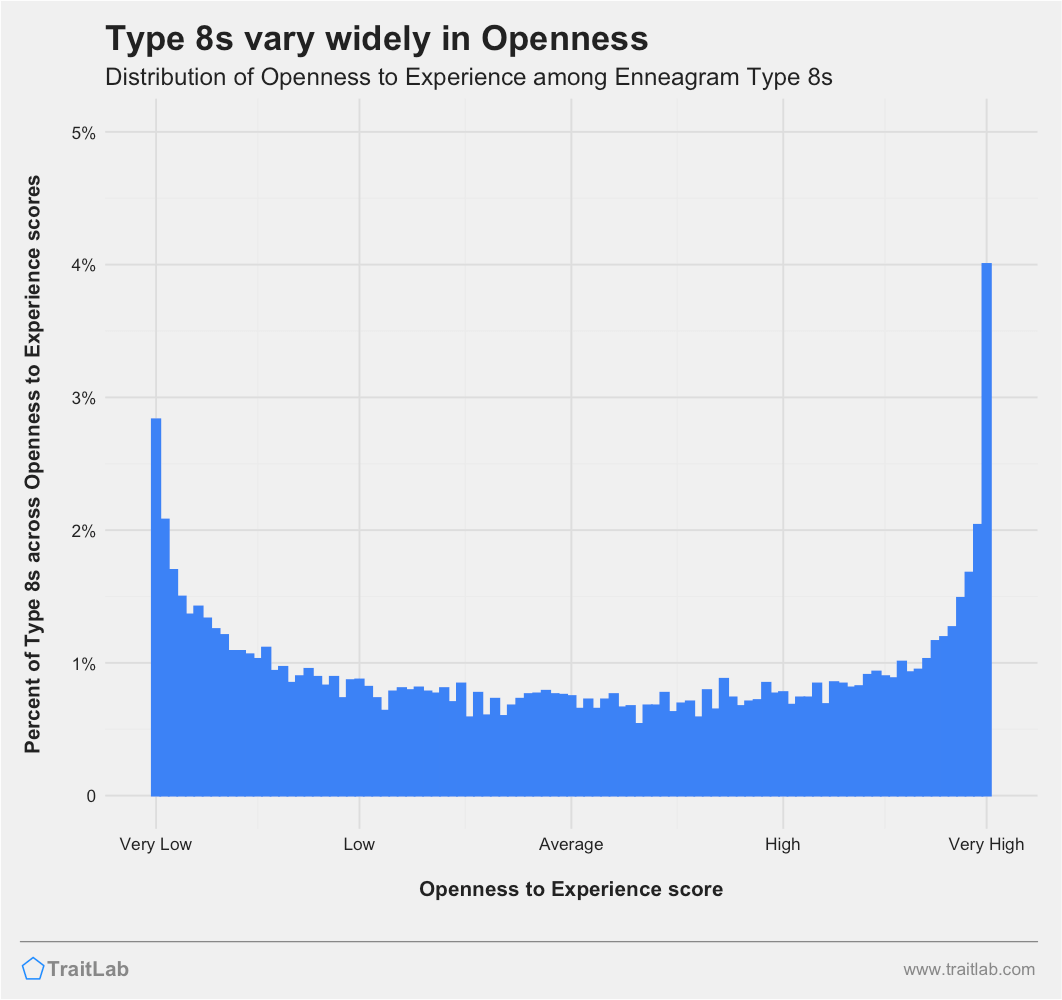
Openness to Experience describes your need for new information, feelings, and experiences.
Highly open people have diverse interests, and they may feel a constant need to learn and try new things.
Less open people prefer familiar ways of doing things. They are less interested in trying new things or seeking out new experiences. They also tend to be less eccentric and have more conventional tastes in hobbies, music, and reading material.
Type 8s typically score higher on Conscientiousness, with more Type 8s falling at the higher end of the scale.
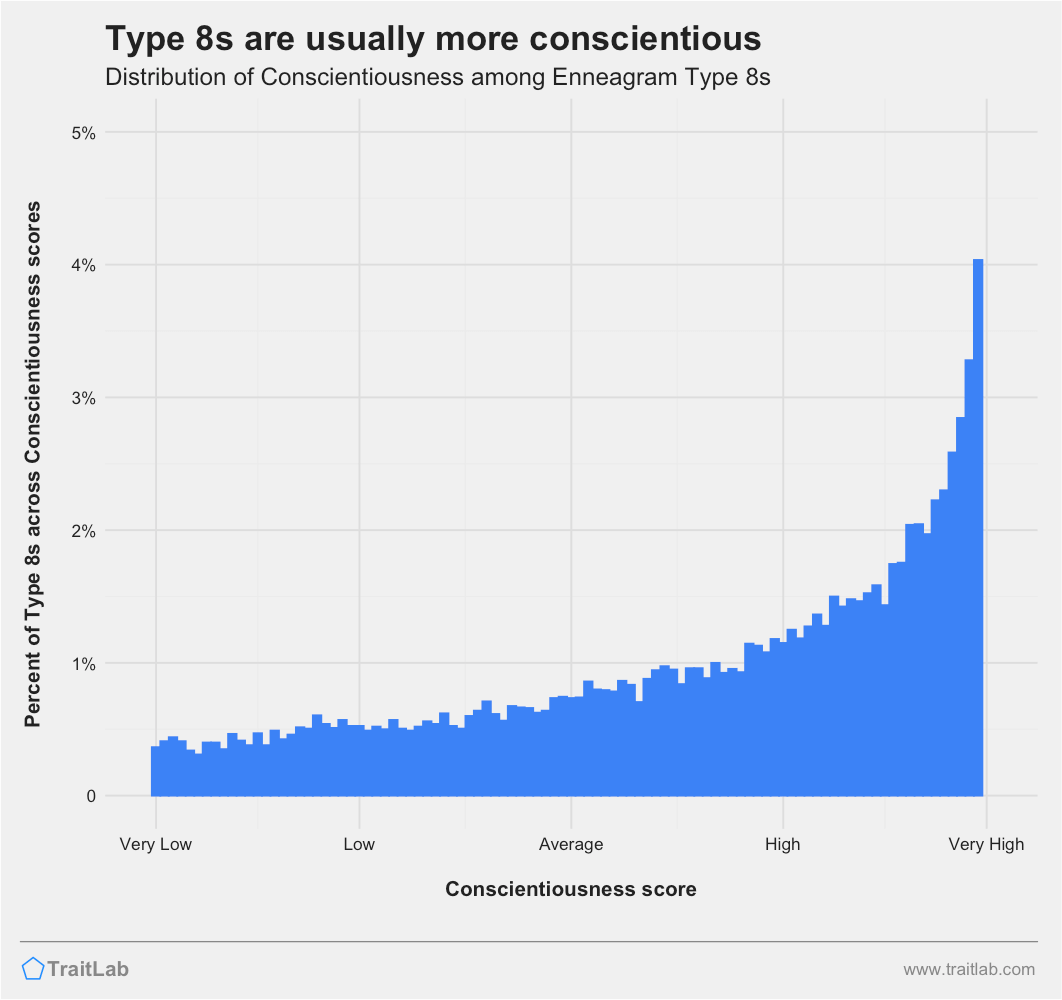
Conscientiousness describes our planning, organization, and regularity. Highly conscientious people, like most Type 8s, tend to create detailed plans to accomplish their goals and stick closely to them. They are less likely to be distracted by diversions or smaller short-term goals, and they excel at maintaining focus on the big picture.
Many Type 8s will have regular schedules and routines to ensure that they can efficiently make progress on multiple goals. They will have little tolerance for disorganization and chaos, and they will work diligently to create order out of a messy situation.
Type 8s stand out from other types by their unusally high Extraversion.
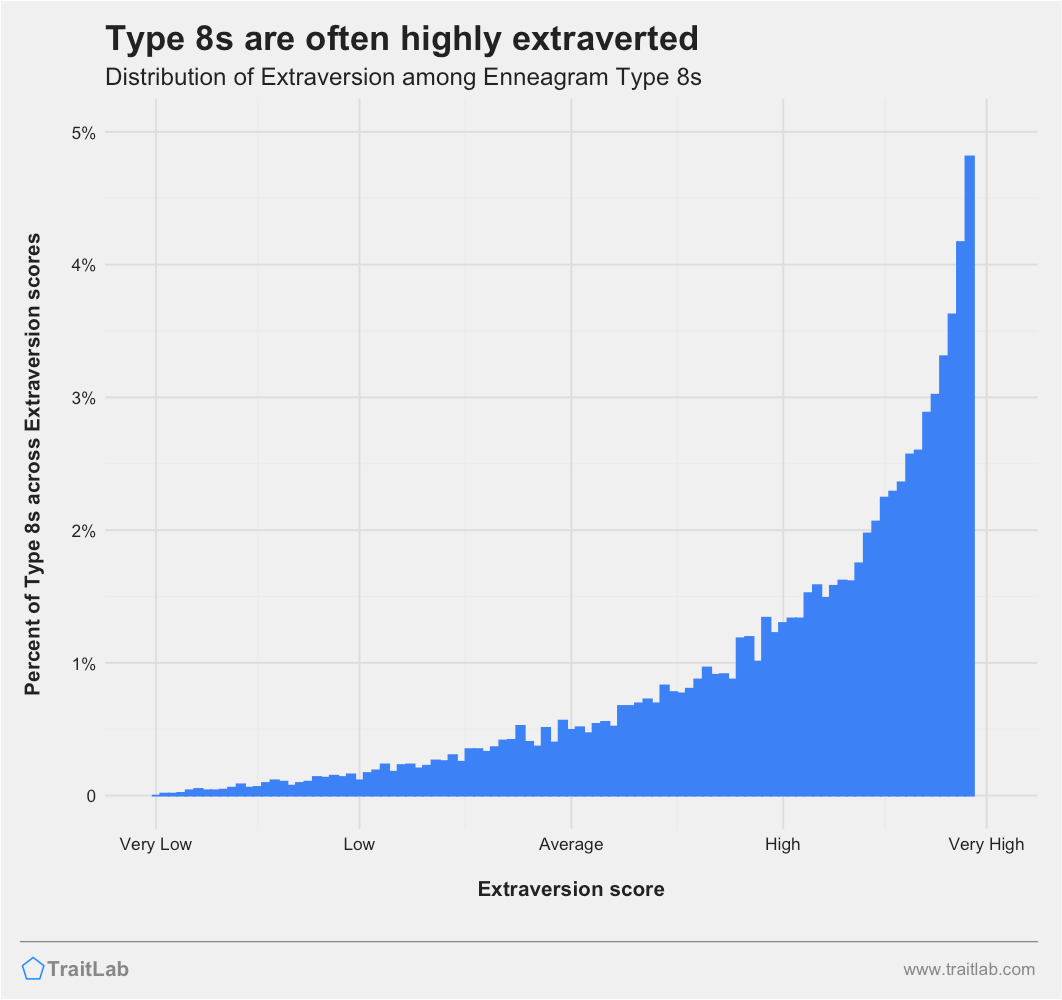
Like many Type 8s, highly extraverted people tend to be more socially outgoing and talkative, and they often seek out more stimulating environments (think loud, crowded, or risky and exciting situations). High extraverts also feel and express positive emotions (e.g., joy, laughter, excitement) more intensely and more frequently.
Highly introverted people are more socially reserved and quiet. They have a lower tolerance for highly stimulating environments and often retreat to calm and quiet situations in solitude. They also experience positive emotions less intensely and less frequently. For example, others may notice that introverts tend to smile and laugh less often than most.
Type 8s often score slightly lower on Agreeableness and can be more demanding than most.
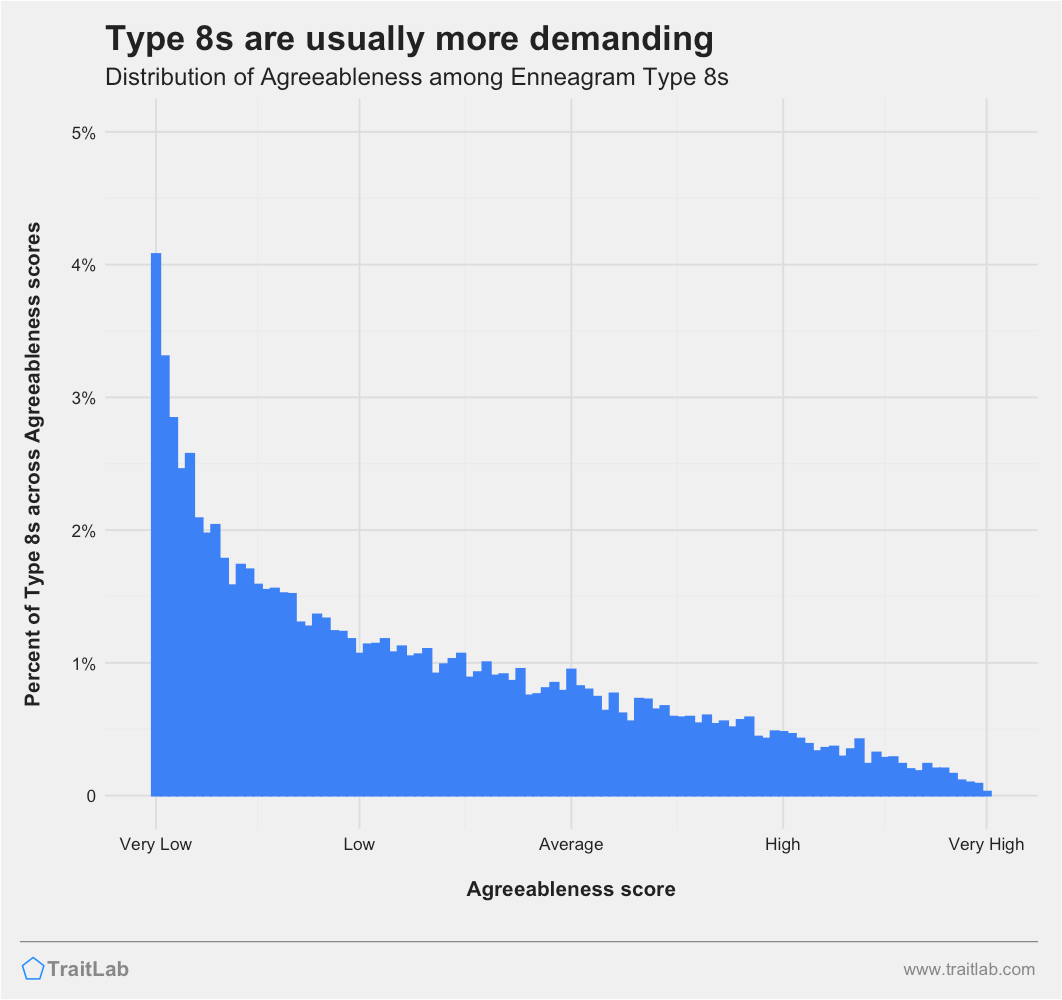
Agreeableness describes your interpersonal warmth, politeness, and empathy.
Like many Type 8s, less agreeable (or more demanding) people are often less concerned with others when pursuing their own goals. They are more willing to create conflict or express disagreement across most situations and feel less discomfort during interpersonal disputes.
Highly agreeable people feel a deep need to maintain warm, friendly relationships and are naturally more hesitant to impose their will on others. They will be more considerate of how their actions impact others and try to reduce or resolve interpersonal conflicts when they arise.
While Type 8s also vary in their level of Neuroticism, most Type 8s fall on the lower, more emotionally stable end of the Neuroticism spectrum
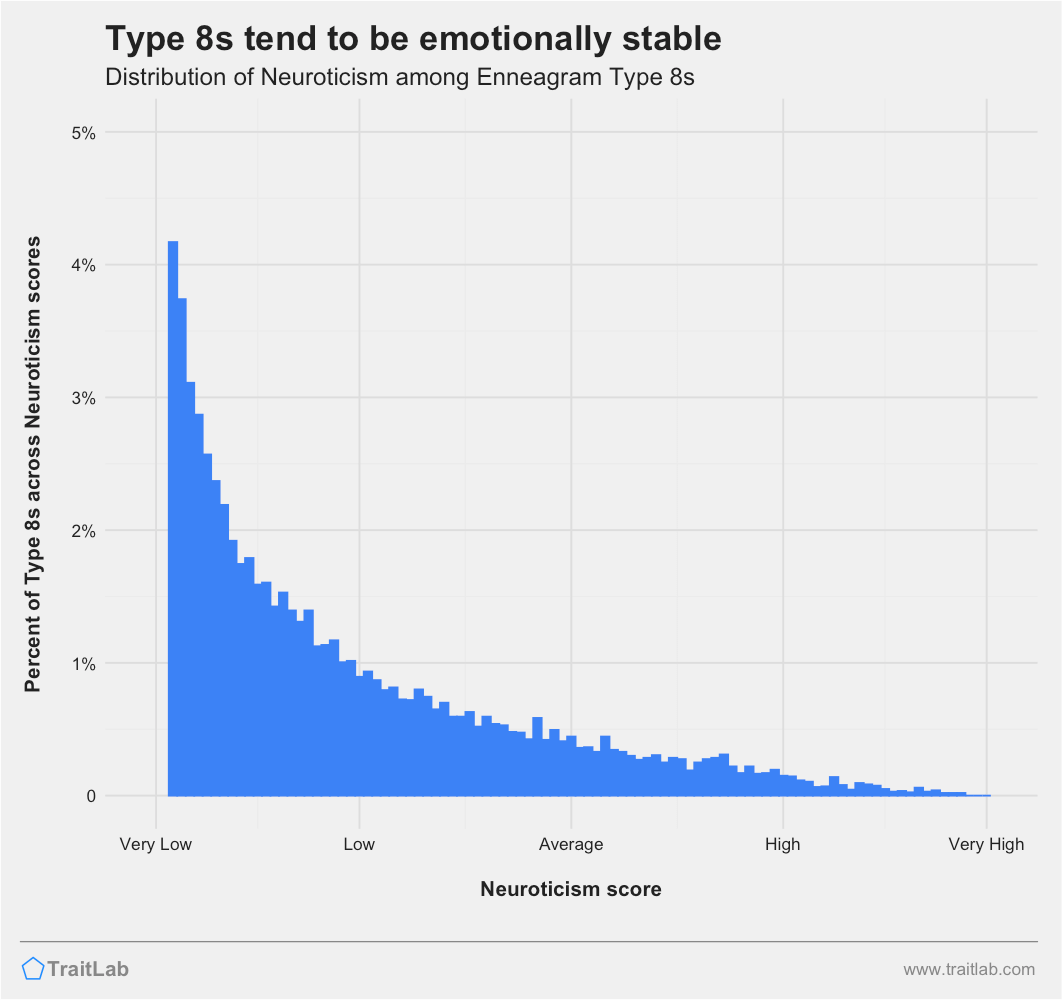
Neuroticism describes how we react to stress and our tendency to experience a variety of negative emotions. As most Type 8s are less neurotic or emotionally stable, they tend to have steadier, more predictable moods, and can more easily adapt to life’s sudden changes and disruptions.
Less neurotic people, like most Type 8s, generally experience less anxiety, anger, frustration, and sadness. They still experience these negative emotions, but less frequently and with less intensity than their more neurotic counterparts. Likewise, they tend to ruminate less on bad experiences and are less likely to doubt and second-guess themselves, resulting in a calmer, more confident style of thinking through problems and decision-making.
Most personalities can’t be described perfectly by a single Enneagram type.
However, with TraitLab’s Enneagram test, you can see which of the nine Enneagram types is most similar to your personality.
For comparisons between Type 8s and other Enneagram types, visit any of the type pairings below: